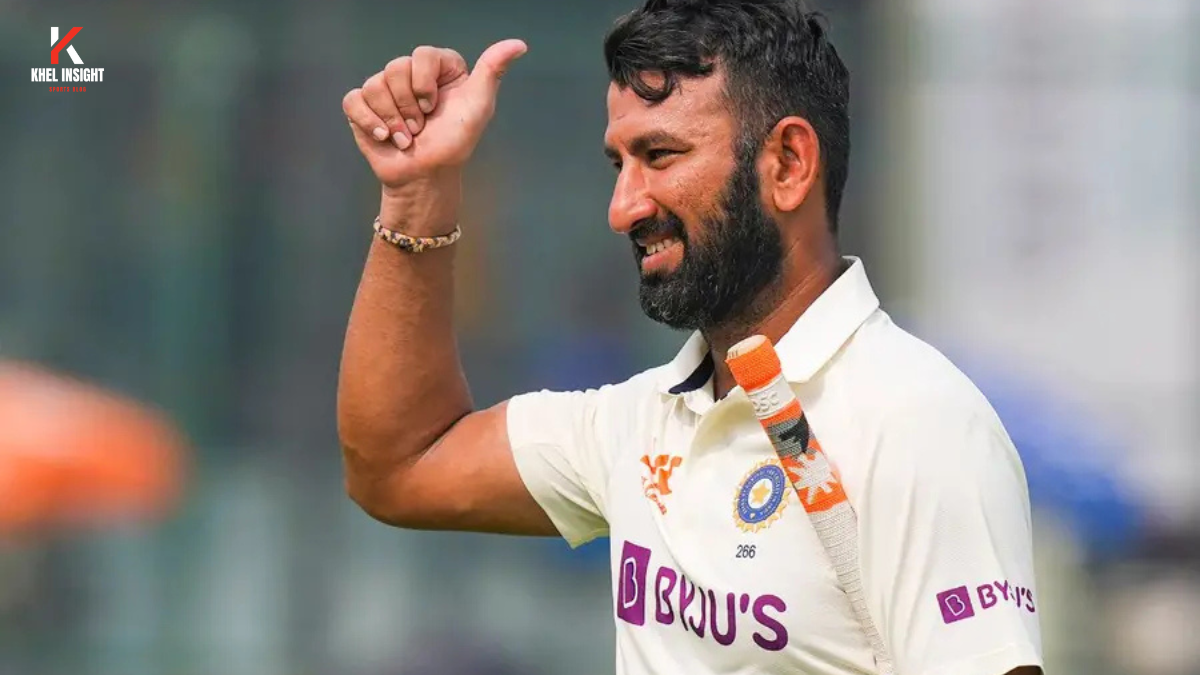

Cheteshwar Pujara Retires from Cricket: A Glorious Career Comes to an End
Cheteshwar Pujara Retires from All Forms of Cricket: End of an Era
Cheteshwar Pujara (37) a veteran Indian batter has announced his retirement from all formats of cricket, ending one of the most celebrated Test careers in modern Indian cricket history. Pujara, widely referred to as “India’s Wall 2.0,” made the emotional announcement via social media on August 24, 2025, thanking fans, teammates and family for their support.
Pujara stated that wearing the Indian jersey was the greatest honor of his life, and that he leaves with memories and gratitude.
Wearing the Indian jersey, singing the anthem, and trying my best each time I stepped on the field – it’s impossible to put into words what it truly meant. But as they say, all good things must come to an end, and with immense gratitude I have decided to retire from all forms of… pic.twitter.com/p8yOd5tFyT
— Cheteshwar Pujara (@cheteshwar1) August 24, 2025
From Rahul Dravid’s Successor to India’s New Wall
Pujara played his first Test match in 2010 against Australia. After Rahul Dravid retired, Pujara easily took over the No. 3 position. For the next 10 years, he was a key part of India’s batting lineup. People knew him for being patient and having a perfect batting style in Test matches.
In today’s cricket world, many players want to hit the ball hard, but Pujara was different. He represented classic Test batting, showing he could be tough, follow the rules, and stay calm when things got difficult.
Cheteshwar Pujara’s Career Stats
- Tests: 103 matches, 7,195 runs, Avg. 43.60, 19 centuries, 35 fifties, HS 206*
- ODIs: 5 matches, 51 runs, HS 27
- First-Class: 278 matches, 21,301 runs, Avg. 51.82, 61 hundreds, HS 352
- List A: 119 matches, 4,584 runs, Avg. 44.08
- T20s: 71 matches, 1,364 runs, SR 109.35
The Australia 2018–19 Series: Pujara’s Finest Hour
One of the most memorable moments of Pujara’s cricketing journey was the triumphant Test series India won in Australia in 2018–19. Across four Tests, he amassed 521 runs, his innings lasting over 1,200 balls, thereby completely stifling Australia’s brilliant pace attack.
Pujara’s marathon innings effort led India to a landmark win against Australia making history and hence first time they could win a Test series Down Under, and as a result, he became a cricketing icon in India.
Also Read: Top 4 bowlers with 550-plus wickets in T20 cricket
The Domestic Giant: The Backbone of Saurashtra
Leaving international cricket aside, Pujara was a run-machine in both the domestic circle and first-class cricket. He scored over 21,000 first-class runs appearing for Saurashtra, while leading the team in several Ranji Trophy campaigns.
He is touted as one of the most consistent first-class batter of all-time, producing 61 hundreds.
Role in Overseas & Home Successes
Besides his awesome performance in Australia, Pujara was key in:
- India’s wins in England
- Big home series victories
- Lots of partnerships that wore down opposing bowlers
He did more than just score runs. He ate up the clock at the crease. He’d stay in for hours, tire out the bowlers and make things easier for guys like Virat Kohli, Rohit Sharma, and Rishabh Pant to come in and score.
New Wall’s Legacy
Most of the time Pujara’s style of play was not understood during the T20 period but anyways his strong mind, perseverance, and determination made him a precious gem for the Indian team. Respected not only by his fellow players but also by the opposing teams, he kept up with Rahul Dravid’s tradition of quality cricket and thus garnered admiration.
In the forthcoming phase of Pujara’s life, he will definitely inject new life into cricket through his coaching, commentary, and mentoring young players, thereby making sure that his vast experience continues to impact Indian cricket.
Cheteshwar Pujara retires as one of India’s best Test players, with 103 Tests and 7,000+ runs under his belt. His career demonstrates that, despite playing in an age of six-hitting and fast scoring, there is still a place in the game for grit, determination, and traditional and old-school Test batting.
Cricket fans generally won’t remember him for his penchant for “twelve” but for the many long, grueling hours of dogged resistance that amassed countless victories for India in some of the most challenging conditions.



















Post Comment